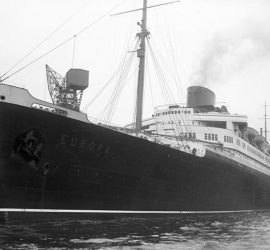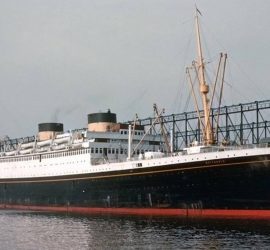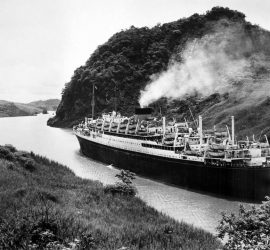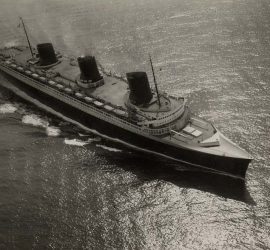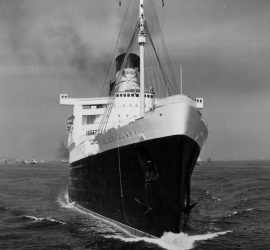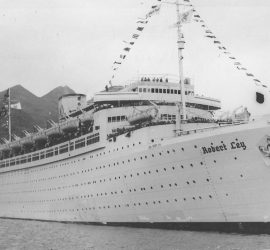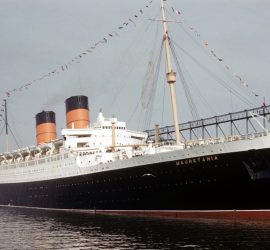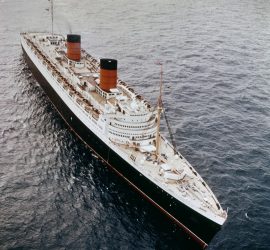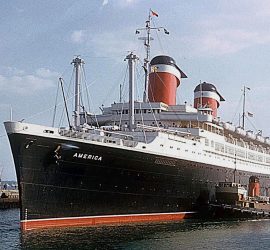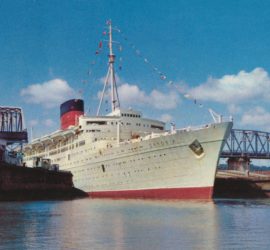1930 – 1962 / Also known as Liberté / Also a Blue Riband champion, the Europa enjoyed a longer career than her sister Bremen. After World War II, she was handed over to the French and became the much-loved Liberté. In this guise, she sailed into the 60s.
film footage
1930 – 1960 / White Star modernised their fleet with the third Britannic, the first British motor ship on the North Atlantic. After trooping duties during World War II, she had a prosperous post-war career, and she is noteworthy for being the last remaining liner of the White Star Line at the time of her retirement.
1932 – 1956 / The second vessel of White Star’s modern pair of motor ships, the Georgic was to be one of the last ships to sport the company livery. Bombed and badly damaged during World War II, the ship was refitted and emerged with a single funnel after the conflict. She was sent to the breakers in 1956.
1935 – 1946 / Arguably the most celebrated liner of all time, the Normandie was a French tour de force that would influence maritime design for decades to come. Her impact was enormous, but she tragically met her demise in New York harbour where she sank after having been ravaged by fire.
1936 – Present Day / Perhaps the most famous ship of all time, rivalled only by the Titanic, Queen Mary was the national symbol that inspired Great Britain’s struggle out of the great depression. She performed invaluable trooping duties during World War II, commanded the North Atlantic in the 50s, and is still with us today in Long Beach, California.
1939 – 1947 / Another ship of the ‘Kraft durch Freude’ project, the Robert Ley did not see much use as a cruise ship before World War II broke out. Utilised mainly as an accommodation ship, she was bombed in the port of Hamburg in the spring of 1945 and sent for demolition once the war was over.
1939 – 1965 / Part of a new breed of Cunarders, the second Mauretania saw just a few months of service before being called up for use as a troop transport. After the war, she had a prosperous career doing crossings and cruises, but was eventually sold for scrap when passengers abandoned liners in favour of air travel.
1940 – 1973 / Queen Elizabeth did not see passenger service until after World War II, during which she provided invaluable service as a troop transport. In peacetime, ‘Lizzie’ ran in tandem with Mary, earning Cunard a fortune. Sadly, her life came to an end in 1973 when she was destroyed by fire in Hong Kong harbour.
1940 – 1994 / Also known as Australis, Italis, Noga, Alferdoss, and American Star / The greatest American-built ship of her time, the America was the pride of the US merchant fleet and had a long career under various flags. She is perhaps best known for her tragic demise; grounded on the rocks of Fuerteventura, she was broken in half and slowly destroyed by the forces of nature.
1949 – 1974 / Also known as Columbia and Caribia / Purpose-built for leisure voyages, Cunard’s ‘Green Goddess’ Caronia was unique in every sense of the word. Offering an exclusive experience, she was a sign of the times that passenger shipping was transitioning from crossings to cruises.

